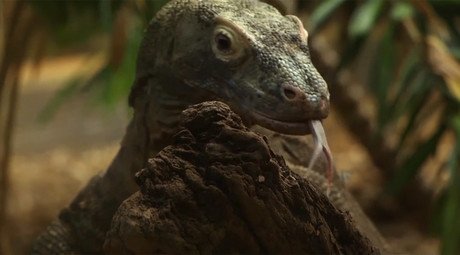Scientists witness Galapagos finches evolve into new species

Finches in the Galapagos Islands have evolved into a new species, marking the first time such an evolution has been observed by scientists.
A population of finches on the Daphne Major island in the Galapagos has been undergoing changes over the past few decades, thanks to species hybridisation.
The finches are part of a group of 15 species known as Darwin’s finches, which helped Charles Darwin with his discovery of the process of evolution through natural selection.
When a single male finch from a different species known as the large cactus finch arrived at the island in 1981, it proceeded to mate with one of the native finches, a medium ground finch, and produced offspring.
"We didn't see him fly in from over the sea, but we noticed him shortly after he arrived. He was so different from the other birds that we knew he did not hatch from an egg on Daphne Major," Princeton zoology professor Peter Grant told Phys.org.
Nearly four decades later, researchers continue to observe the relatives of that inter-species mating. There are about 30 birds there today which are different from the native finches living on the island. The birds have different habits and appearance to the original finches. They are bigger, earning them the name, “Big bird population” from the researchers.
Professors Rosemary and Peter Grant of Princeton University collaborated with Prof Leif Andersson of Sweden's Uppsala University to genetically analyze the mixed-species population, and published their findings in Science journal.
“From the second generation onwards the lineage bred endogamously, and despite intense inbreeding, was ecologically successful and showed transgressive segregation of bill morphology,” they wrote. “This example shows that reproductive isolation, which typically develops over hundreds of generations, can be established in only three.”
There is no interbreeding between the new finches and others, as the native females don’t recognize the new males’ songs.
Ancient T-Rex skeleton found in #Utah to unveil more about evolution & anatomy - scientists https://t.co/Ihprtk0XRopic.twitter.com/1PMNPdpV14
— RT (@RT_com) October 22, 2017
"The surprise was that we would expect the hybrid would start to breed with one of the other species on the island and be absorbed,” Andersson told the BBC. “We have confirmed that they are a closed breeding group."
It used to be believed that two different species are unable to produce fertile offspring. Now, scientists realise that species of birds and other animals can interbreed and create fertile young.
Scientists think the male cactus finch flew from the island of Espanola, 65 miles away from the Galapagos.














